Steel Cord Belt Splice
Steel Cord Belt Splice : Steel cord belts are an essential component in heavy-duty material handling systems such as mining, ports, and construction sites. They are designed to withstand high loads and provide maximum durability and reliability. The strength of a steel cord belt comes from the steel cords that run through the belt’s length, which are responsible for carrying the weight of the material being transported. In this article, we will discuss the construction of steel cord belts, belt joint devices, belt clamping device classification, and methods.
Belt clamping devices (portable and stationary)
Steel cord belts are made up of several components that work together to provide maximum strength and durability. The components of a steel cord belt include:
- Top cover: The top cover is the outer layer of the belt that is in contact with the material being transported. It is made of a highly durable material such as rubber, polyurethane, or PVC.
- Steel cords: Steel cords are the primary load-bearing component of a steel cord belt. They are made up of multiple steel wires twisted together to form a cord, which runs through the length of the belt.
- Core rubber: The core rubber is the layer of rubber that is between the steel cords. It provides cushioning and protection to the steel cords and helps to maintain the shape of the belt.
- Bottom cover: The bottom cover is the inner layer of the belt that is in contact with the pulleys. It is also made of a highly durable material such as rubber, polyurethane, or PVC.
Steel Cord Belt Splice
The belt joint device is used to connect the two ends of the steel cord belt together. There are several types of belt joint devices available, including:
- Mechanical fasteners: Mechanical fasteners are a popular method of joining steel cord belts. They consist of metal plates that are bolted or riveted to the ends of the belt. Mechanical fasteners are easy to install and can be used for both temporary and permanent joints.
- Vulcanized splices: Vulcanized splices involve heating the ends of the belt and joining them together using a special adhesive. Vulcanized splices provide a strong and durable joint and are commonly used for permanent joints.
Belt Clamping Device Classification and Methods
Belt clamping devices are used to hold the two ends of the steel cord belt together during the jointing process. There are two main types of belt clamping devices: portable and stationary.
- Portable belt clamping devices: Portable belt clamping devices are designed to be easily moved and can be used in various locations. They typically consist of two plates that are bolted together, with a hydraulic pump used to provide the necessary clamping force.
- Stationary belt clamping devices: Stationary belt clamping devices are permanently installed in one location and are used for large conveyor systems that require frequent belt jointing. They typically consist of a frame with two clamping bars that hold the belt in place during the jointing process.
Steel cord belts are an essential component in heavy-duty material handling systems. The strength of a steel cord belt comes from the steel cords that run through the belt’s length. Belt joint devices and belt clamping devices are used to connect the two ends of the steel cord belt together during the jointing process. Mechanical fasteners and vulcanized splices are the two primary methods of joining steel cord belts, while portable and stationary belt clamping devices are used to hold the two ends of the belt together during the jointing process.
I. Brief introduction of belt joint device.
The connection of steel cord belt bucket elevator is an important work. It is related to whether the elevator can work safely and normally. The joint is divided into plane vulcanization type and mechanical connection type according to the belt connection mode. Because the vulcanized joint is difficult to operate, the cost is too high and the maintenance is inconvenient, it is rarely used. The belt clamping mentioned in this instruction refers specifically to the mechanical belt joint connection mode.
The belt clamping is divided into two parts namely the belt joint body part and the end of the wire rope fixing part. The joint body is composed of two rubber belt pressing plate and a rubber belt backing plate.
2, Belt clamping device classification
According to the way of wire rope fixing at the end, the clamping device can be divided into three types: integral cast lead type, integral cast glue type and steel splint locking type.
The clamping device is divided into plain carbon steel, stainless steel, light high-strength alloy and other materials according to the joint body manufacturing material;
According to the structure of joint body, it can be divided into two types: assembly type and integral type.
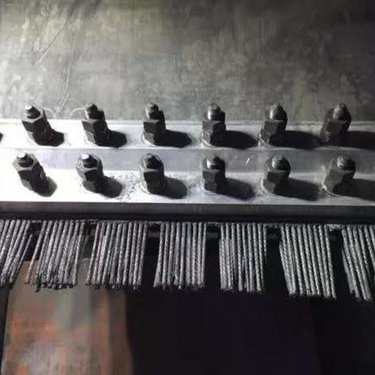
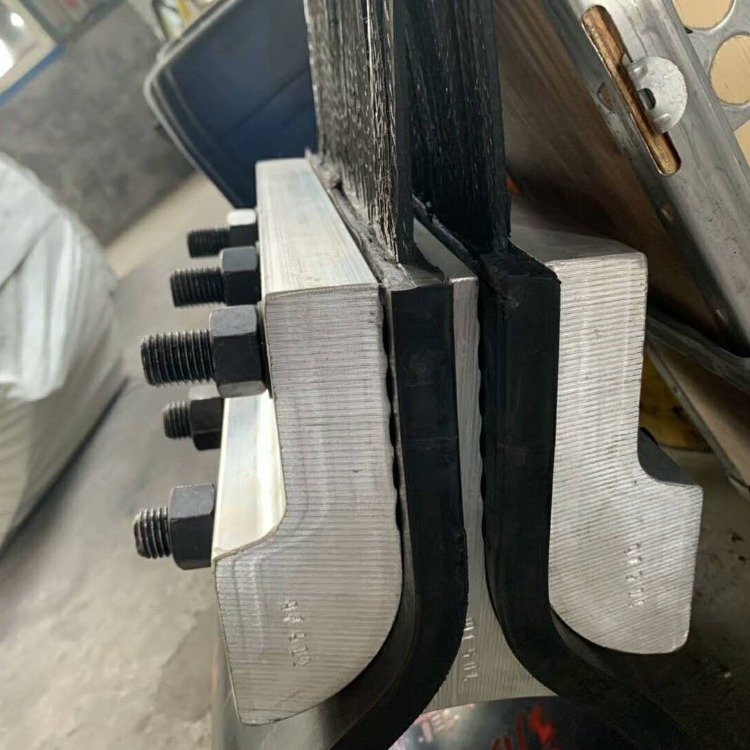
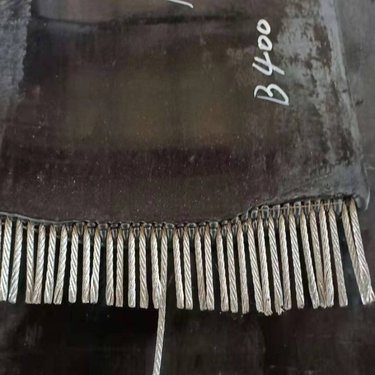
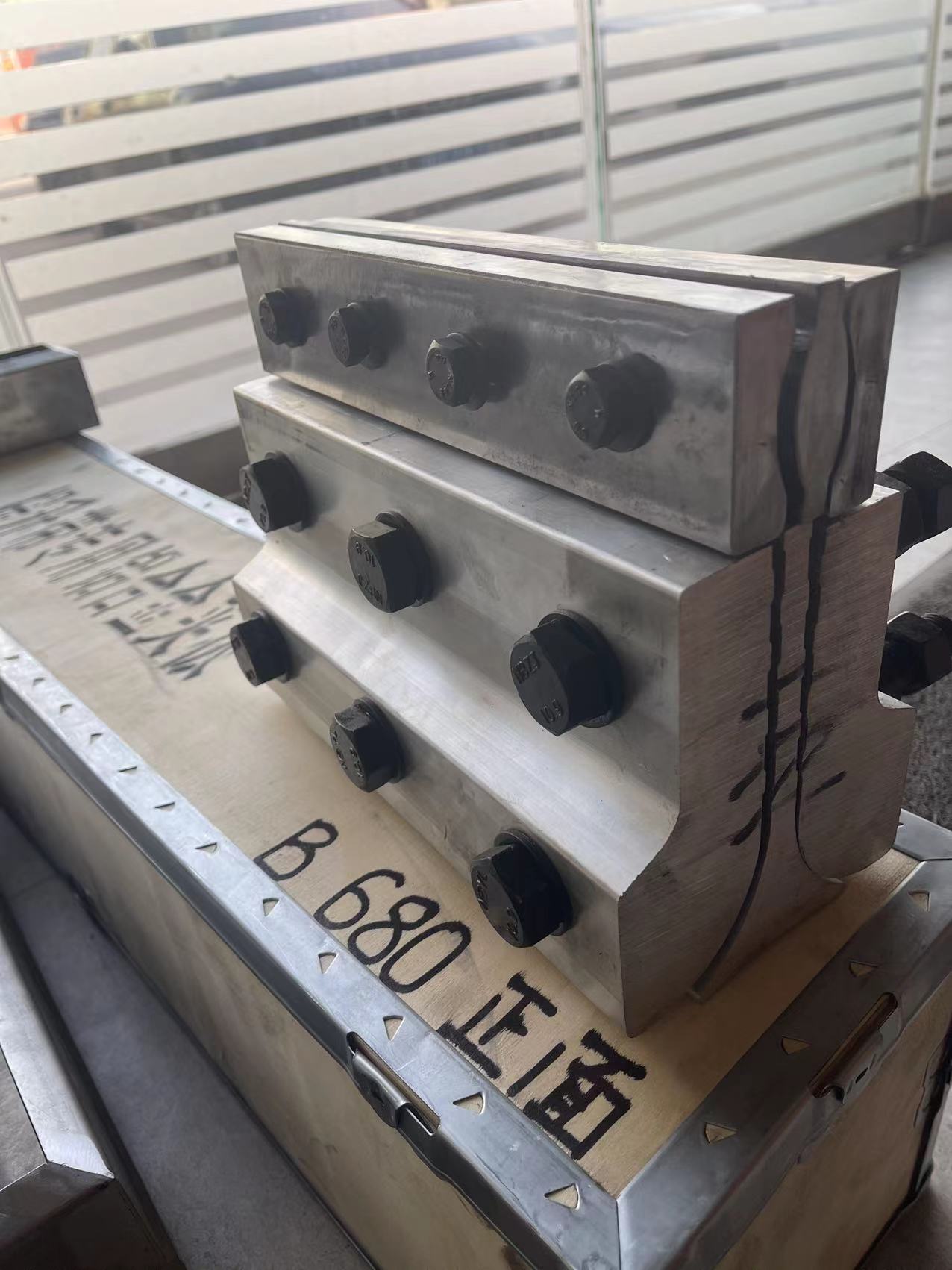
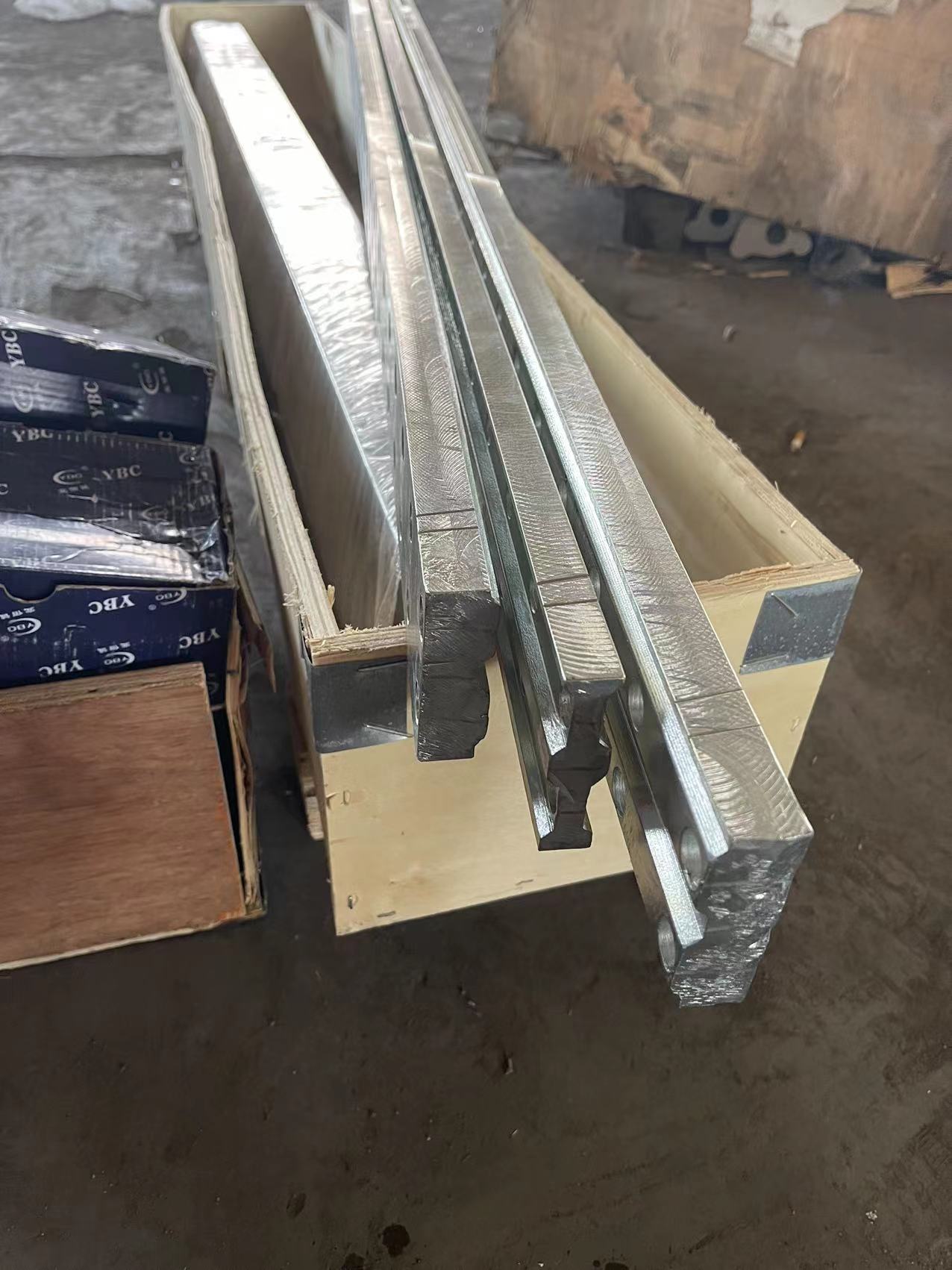
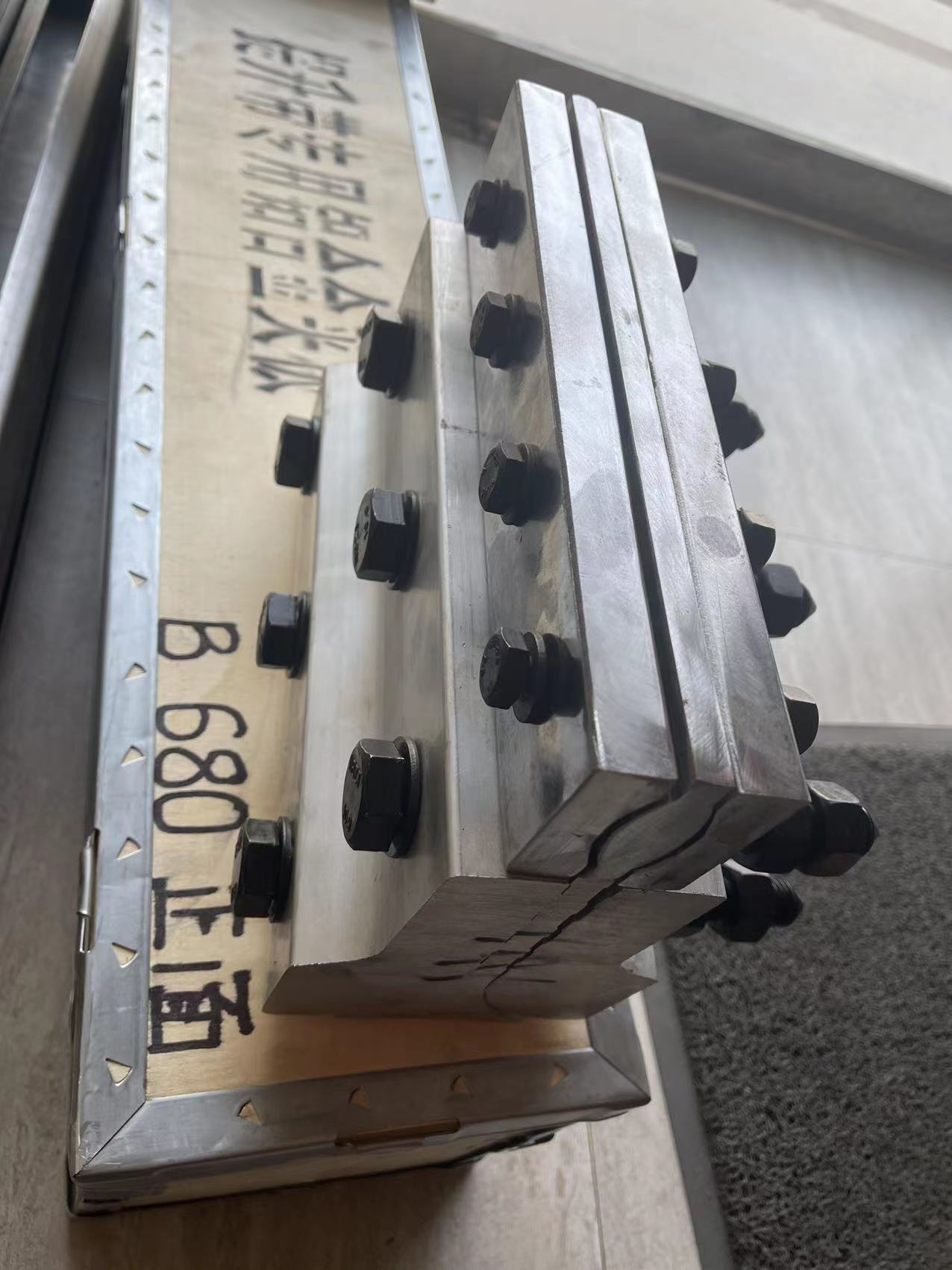
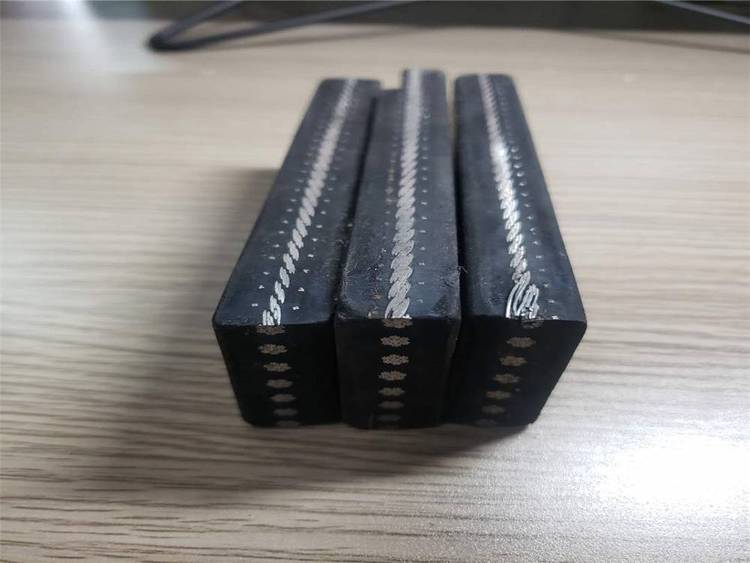
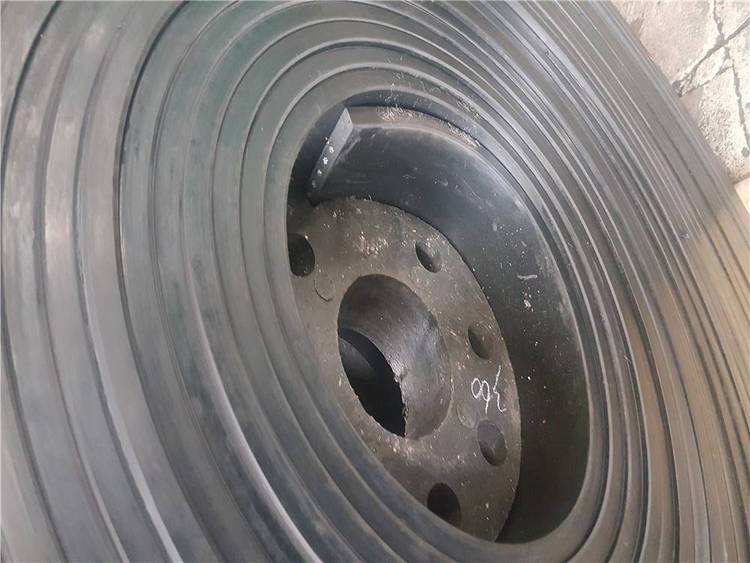
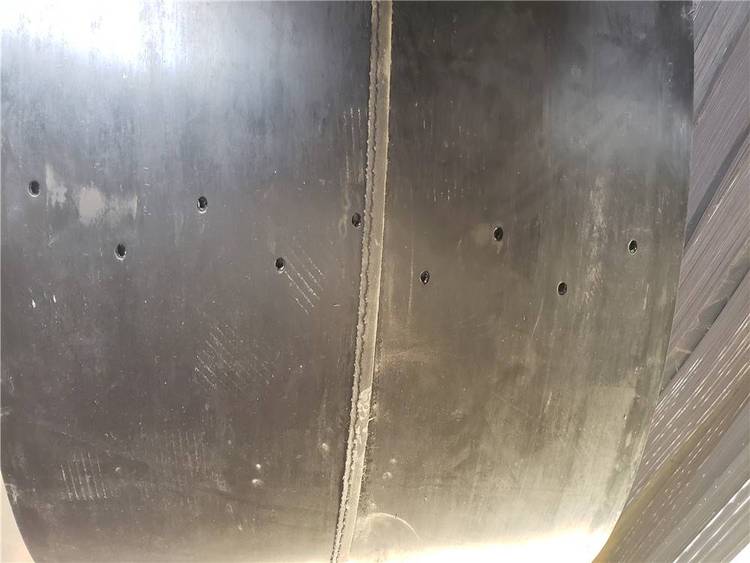
Characteristics of the belt clamping device
The whole casting lead fixation of the wire rope at the end makes the fixed part of the wire rope at the end of the joint form an integral whole with the joint body, which has the characteristics of firm and reliable connection. However, due to the casting of lead at high temperature, it will undoubtedly increase the weight of the joint part and accelerate the aging degree of the adhesive tape at the joint, which is not conducive to the service life of the adhesive tape.
The whole casting glue fixing of the end wire rope makes the fixed part of the end of the steel wire and the joint body form a whole, all installed in normal temperature environment, with the advantage of firm connection;
The tail wire rope splint locking type makes the fixed part of the tail end of the wire rope separate from the joint body, the joint is heavier, but has the advantages of reusable, convenient installation and replacement, transportation is not restricted, the same as the above;
General carbon steel has high strength and low manufacturing cost, but the joint is heavier, which affects the service life of the tape.
Stainless steel high strength, high manufacturing cost, but the joint is heavy, affecting the service life of the tape, generally used in special environment;
Lightweight high-strength aluminum alloys have high strength, high manufacturing cost, but light weight, can be used in most environments;
Assembly type compared with the whole, the strength is poor, generally used for unimportant occasions;
The integral joint body connection has the characteristics of high strength, simple installation or replacement, and convenient maintenance.
